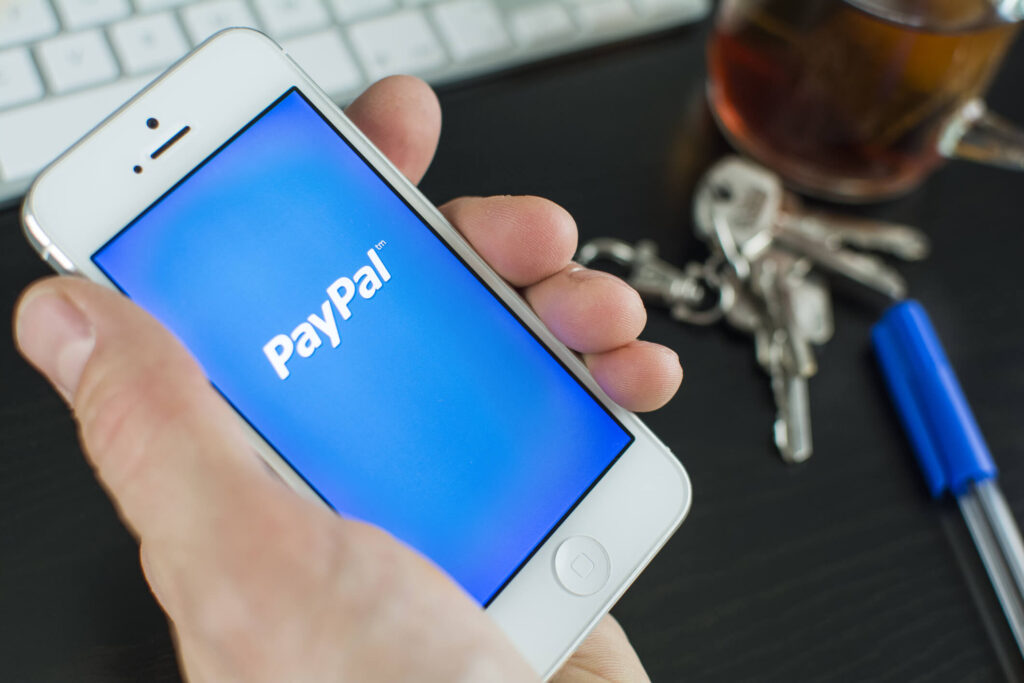
By American April 17, 2024
In today’s fast-paced digital world, businesses are constantly seeking ways to streamline their operations and improve efficiency. One area that has seen significant advancements is payment systems. Integrated payment systems have emerged as a game-changer for businesses, offering a wide range of benefits that can revolutionize the way transactions are conducted. In this article, we will explore the advantages of integrated payment systems and how they can enhance business operations.
What are Integrated Payment Systems?
Integrated payment systems refer to a comprehensive solution that combines various payment methods, such as credit cards, debit cards, mobile payments, and online transactions, into a single platform. These systems seamlessly integrate with a business’s existing software or point-of-sale (POS) system, allowing for a smooth and efficient payment process. By consolidating multiple payment methods into one system, businesses can simplify their operations and provide a seamless experience for their customers.
Understanding the Basics of Integrated Payment Systems
To fully grasp the benefits of integrated payment systems, it is essential to understand how they work. At their core, integrated payment systems act as a bridge between the customer, the business, and the financial institution. When a customer makes a payment, the integrated payment system securely captures the transaction details and processes it through the appropriate channels. This eliminates the need for manual data entry and reduces the risk of errors or fraud.
How Integrated Payment Systems Work: A Step-by-Step Guide
Integrated payment systems streamline various business processes by combining payment processing with other business operations. This guide will walk you through the steps of how these systems function, illustrating their efficiency and seamless integration capabilities.
Step 1: Customer Makes a Purchase
The process begins when a customer decides to make a purchase, either in-store or online. In physical stores, this might involve swiping a card at a POS terminal. Online, it could mean entering payment details on a checkout page.
Step 2: Transaction Data Captured
Once the customer initiates payment, the integrated payment system captures all relevant transaction data. This data includes the amount, payment method, and transaction time, along with any customer data provided during the transaction process.
Step 3: Data Encryption and Security Checks
The transaction data is then encrypted and sent through a secure gateway to verify transaction details and authenticate the transaction. This step is crucial for protecting sensitive information and preventing fraud.
Step 4: Authorization Request
The payment processor sends an authorization request to the card-issuing bank or financial institution. This step involves checking whether the customer has sufficient funds or credit to complete the purchase.
Step 5: Transaction Approval or Denial
The bank responds to the authorization request with an approval or denial based on the customer’s available funds and account status. This information is sent back through the payment gateway to the merchant’s integrated payment system.
Step 6: Confirmation to Customer
Once the transaction is approved, the customer receives a confirmation message. This could be a digital receipt in the case of online purchases or a printed receipt for in-store transactions.
Step 7: Record Syncing with Business Software
The integrated system automatically updates all relevant business systems with the transaction details. For example:
- Sales data is updated in the CRM system to reflect the customer’s purchase history.
- Inventory levels are adjusted in the inventory management system.
- Financial records in the accounting software are updated to include the new transaction.
Step 8: Settlement and Reconciliation
Finally, the transaction amount is settled between the merchant’s bank and the customer’s bank, and funds are transferred accordingly. The integrated payment system assists in reconciling the transaction by matching it against bank statements to ensure accuracy in financial reporting.
The Benefits of Integrated Payment Systems for Businesses
Integrated payment systems offer numerous advantages for businesses of all sizes and industries. Let’s explore some of the key benefits:
Increased Efficiency and Time Savings
One of the primary advantages of integrated payment systems is the increased efficiency they bring to businesses. By automating the payment process and eliminating manual data entry, businesses can save valuable time and resources. This allows employees to focus on more critical tasks, such as customer service or business growth initiatives. Additionally, integrated payment systems enable faster transaction processing, reducing wait times for customers and improving overall satisfaction.
Enhanced Customer Experience and Satisfaction
In today’s competitive market, providing an exceptional customer experience is crucial for business success. Integrated payment systems play a significant role in enhancing the customer experience by offering a seamless and convenient payment process. Customers can choose their preferred payment method and complete transactions quickly and securely. This not only improves customer satisfaction but also encourages repeat business and positive word-of-mouth referrals.
Improved Accuracy and Reduced Errors
Manual data entry is prone to errors, which can lead to costly mistakes and customer dissatisfaction. Integrated payment systems eliminate the need for manual data entry, reducing the risk of errors and ensuring accurate transaction processing. By automatically capturing and transmitting payment details, businesses can minimize the chances of incorrect information being entered, resulting in smoother operations and improved financial accuracy.
Cost Savings and Financial Management
Integrated payment systems can also lead to significant cost savings for businesses. By streamlining the payment process, businesses can reduce administrative costs associated with manual data entry, reconciliation, and error correction. Additionally, integrated payment systems provide robust reporting and analytics capabilities, allowing businesses to gain valuable insights into their financial performance. This enables better financial management and informed decision-making.
Choosing the Right Integrated Payment System for Your Business
Selecting the right integrated payment system is crucial for maximizing the benefits and ensuring a seamless integration process. Here are some factors to consider when choosing an integrated payment system:
Factors to Consider When Selecting an Integrated Payment System
- Compatibility: Ensure that the integrated payment system is compatible with your existing software or POS system. Seamless integration is essential for a smooth transition and uninterrupted operations.
- Security: Security should be a top priority when selecting an integrated payment system. Look for systems that offer robust encryption, tokenization, and fraud prevention measures to protect sensitive customer data.
- Payment Methods: Consider the payment methods supported by the integrated payment system. It should accommodate a wide range of payment options to cater to diverse customer preferences.
- Scalability: Choose an integrated payment system that can scale with your business’s growth. It should be able to handle increasing transaction volumes and accommodate future expansion.
Popular Integrated Payment Systems in the Market
There are several integrated payment systems available in the market, each with its unique features and capabilities. Some popular options include:
Square
Square is renowned for its versatility and ease of use, making it a favorite among small to medium-sized businesses. It offers an all-in-one payment solution that integrates with a variety of business functions, including point of sale (POS), inventory management, and customer relationship management (CRM).
Key Features:
- Seamless integration with Square POS and other business apps.
- Real-time analytics and sales reporting.
- Ability to handle both online and offline payments.
PayPal
A giant in the online payment sector, PayPal offers robust integrated payment solutions tailored for e-commerce businesses. Its platform supports a wide range of payment methods, from credit and debit cards to PayPal balances.
Key Features:
- Extensive global reach with multi-currency support.
- Integration with major e-commerce platforms like Shopify and WooCommerce.
- Fraud protection and risk management tools.
Stripe
Stripe is highly favored by developers and tech-savvy businesses due to its customizable nature and powerful API. It’s particularly well-suited for online businesses that need a flexible, scalable payment solution.
Key Features:
- Advanced API for custom integration.
- Support for subscription-based billing and dynamic pricing models.
- Strong security measures and compliance with PCI DSS standards.
Adyen
Adyen provides a payment platform that caters to enterprises looking for a global payment solution. It supports a wide range of payment methods and is known for its ability to optimize payment authorization rates across different regions.
Key Features:
- Single platform for all payments, online, in-app, and in-store.
- Advanced data insights and revenue optimization tools.
- High transaction approval rates and detailed reporting.
QuickBooks Payments
For businesses already using QuickBooks for their accounting needs, QuickBooks Payments offers a seamless integration. This system simplifies the reconciliation of payments with financial records, making it ideal for small to medium-sized businesses focused on financial management.
Key Features:
- Direct integration with QuickBooks accounting software.
- Automatic updates of invoices and accounts receivable.
- Mobile payment processing capabilities.
Evaluating the Integration Process and Compatibility
Before finalizing an integrated payment system, it is essential to evaluate the integration process and compatibility with your existing systems. Consider the following:
- Integration Support: Check if the integrated payment system provides comprehensive integration support, including documentation, developer resources, and customer support.
- Testing and Certification: Ensure that the integrated payment system offers testing and certification processes to validate the integration and ensure compliance with industry standards.
- API and SDK Availability: Look for an integrated payment system that provides robust APIs (Application Programming Interfaces) and SDKs (Software Development Kits) for seamless integration with your software or POS system.
Frequently Asked Questions
Q.1: What is the difference between integrated payment systems and traditional payment methods?
Integrated payment systems differ from traditional payment methods in that they consolidate multiple payment options into a single platform. Traditional payment methods typically involve separate systems or devices for credit cards, cash, and checks, requiring manual reconciliation and data entry.
Q.2: Are integrated payment systems secure?
Yes, integrated payment systems prioritize security and employ various measures to protect sensitive customer data. These measures include encryption, tokenization, and fraud prevention tools to ensure secure transactions.
Q.3: Can integrated payment systems be customized to fit specific business needs?
Yes, many integrated payment systems offer customization options to cater to specific business requirements. This includes branding, user interface customization, and integration with other business systems.
Q.4: How long does it take to integrate a payment system into existing business operations?
The integration timeline can vary depending on the complexity of the business’s existing systems and the chosen integrated payment system. It is recommended to work closely with the payment system provider and allocate sufficient time for testing and validation.
Conclusion
Integrated payment systems have revolutionized the way businesses handle transactions, offering a wide range of benefits that streamline operations and enhance the customer experience. From increased efficiency and time savings to improved accuracy and cost savings, integrated payment systems have become an essential tool for businesses of all sizes and industries. By carefully selecting the right integrated payment system and ensuring a seamless integration process, businesses can unlock the full potential of these systems and pave the way for success in the digital age.




